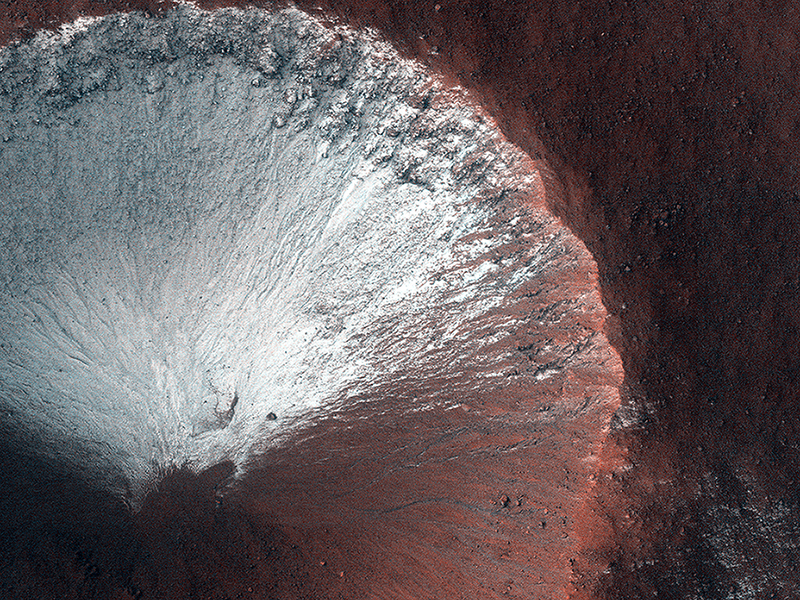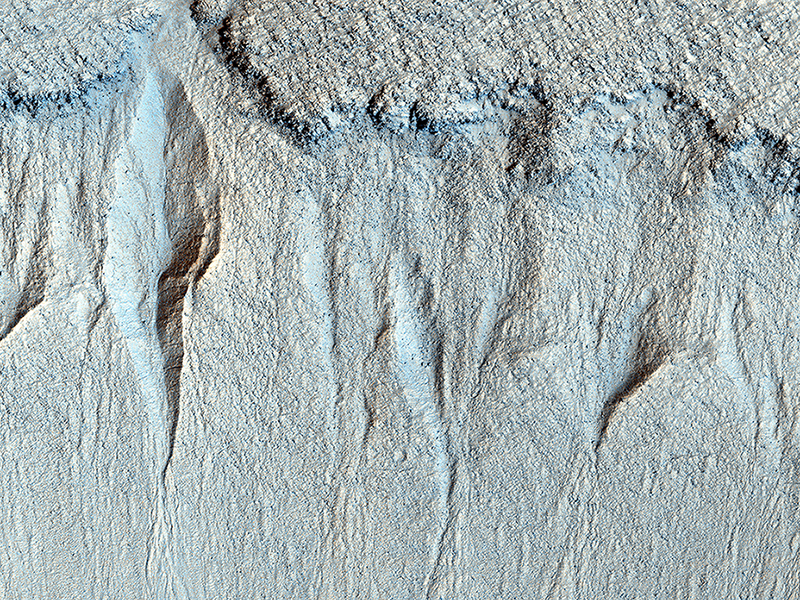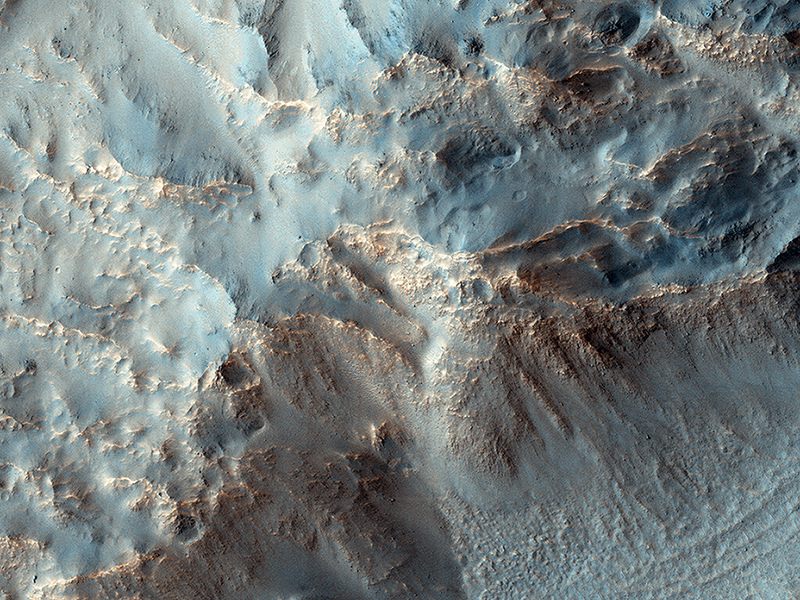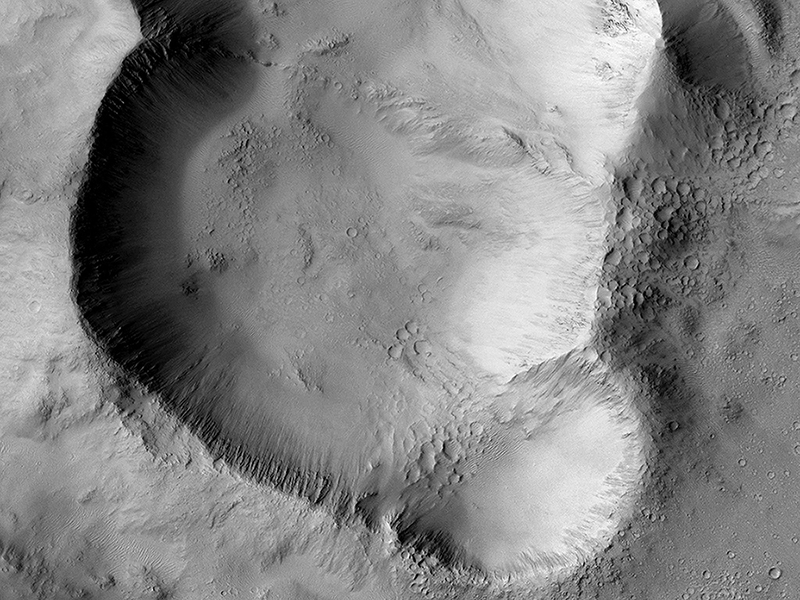Livio L. Tornabene and the HiRISE Team wrote:Crater Slopes: The Power of a Repeat Image (ESP_037125_1315) (HiClip)
Why does HiRISE take so many repeat images of the same area? Repeat coverage actually serves a special purpose, such as detecting seasonal changes (frost deposition and sublimation) and temporal changes (dust devil tracks and avalanches.) These repeat images also give us a “sneak peek” of future pictures to determine any differences.
Such is the case for this observation which we took in June 2014, and covers a small 1-kilometer sized simple crater located in the Southern hemisphere. In this composite and enhanced image, the crater shows frost on all its south-facing slopes (e.g., the crater’s north wall and southern ejecta). This image was taken in late Martian winter as Mars is heading into spring.
With a repeat image, we can now see any changes of the same crater. And what do you know: all the frost that was once present on the south-facing slopes of the crater are now gone, having sublimated and returned to the Martian atmosphere.
HiRISE Science Team wrote:Gullies in Liu Hsin Crater (ESP_038896_1255) (HiClip)
Here, we have a group of small gullies along a rock layer on the south wall of Liu Hsin Crater. At the foot of the gullies you can see the “fans” of granular sediment that have been deposited downhill from the gully formation.
Nearby, there are much larger gullies. By comparing the gullies that are just 20 kilometers away, we may be able to determine the factors that affect their size.
Liu Hsin (also spelled Xin) was a Chinese astronomer, historian, and editor during the Western Han Dynasty (206 BCE to 9 CE) and then the Xin Dynasty (9 to 23 CE).
This caption is based in part on a public target suggestion from HiWish. (Note: the header image is non map-projected, so approximate north is down).
HiRISE Science Team wrote:Southeast Rim of Hale Crater (ESP_038904_1430) (HiClip)
In the search for potential areas with recurring slope lineae (RSL), which are probably caused by briny water, the central peak of Hale Crater is a common target. But we have no images of the southeast rim of the crater. Hale Crater is about 150 kilometers (90 miles) in diameter and located in the mid-southern latitudes just north of the massive Argyre basin.
RSL are often found on northwest-facing slopes, and they occur in the central peak of Hale. During the season when we know RSL appear, this observation at high resolution might help us see if they occur elsewhere.
This caption is based on the original science rationale.
Eric Pilles, Livio Tornabene, Ryan Hopkins, Kayle Hansen wrote:Triple-Crater in Elysium Planitia (ESP_039147_1940) (HiClip)
This image shows a triple impact crater in Elysium Planitia near Tartarus Montes, which probably formed when a binary—or even triple—asteroid struck the surface. (Binary asteroids orbit each other, while also orbiting the Sun). The two larger craters must have been produced by asteroids of approximately the same size, on the order of a few hundred meters across.
The northern crater might have been created by a smaller asteroid, which was orbiting the larger binary pair, or when one of the binary asteroids broke up upon entering the atmosphere. The shape of the triple-crater is oblong, suggesting an oblique impact; therefore, another alternative would be that the asteroid split upon impact and ricocheted across the surface, creating additional craters.
What evidence is visible in this image that shows that the three craters did not form independently? The ejecta blanket appears to be uniform around the triple-crater showing no signs of burial or overlapping ejecta from overprinting craters. The crater rims are significantly stunted where the craters overlap significantly.
Credit: NASA/JPL/University of Arizona
<< Previous HiRISE Update



